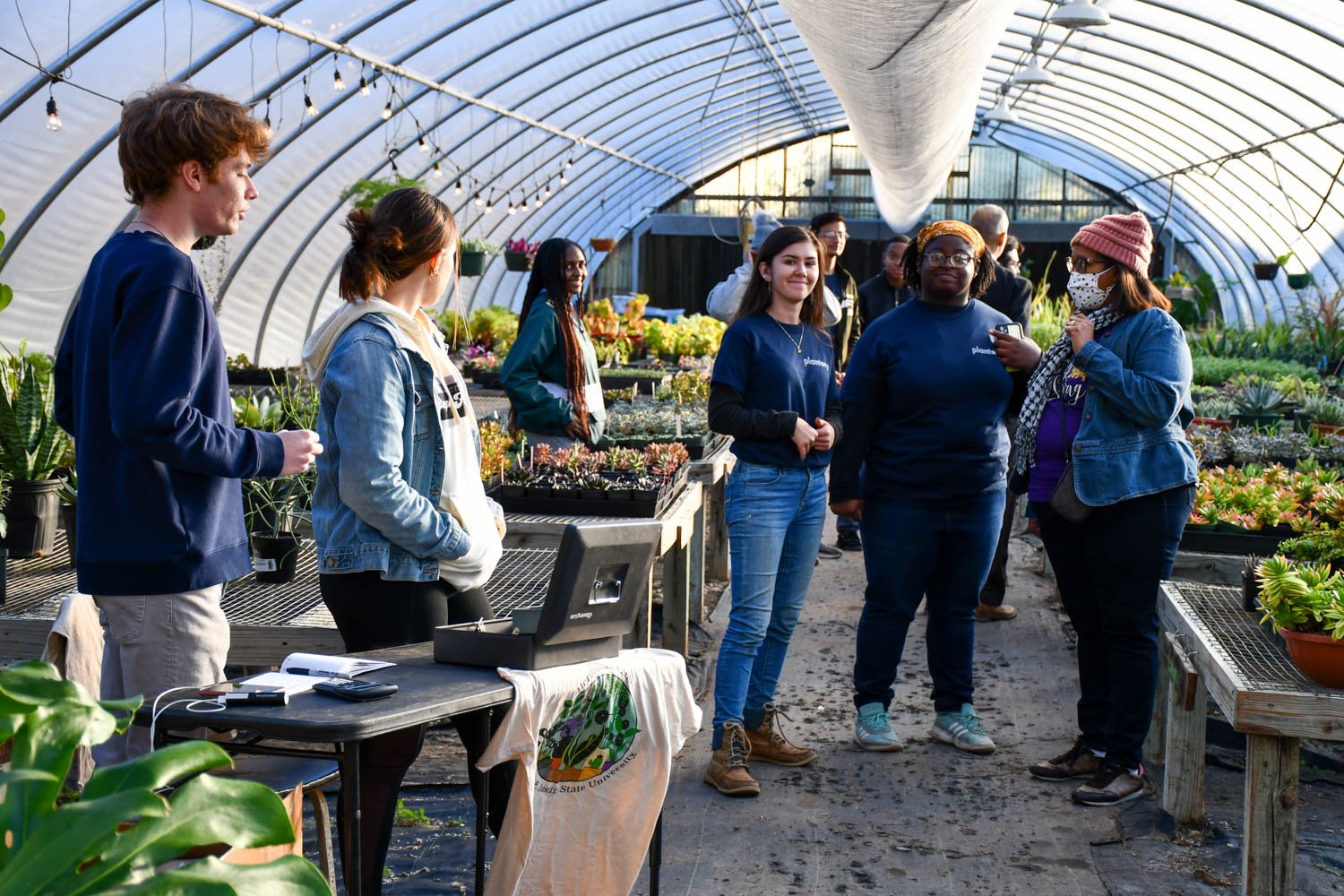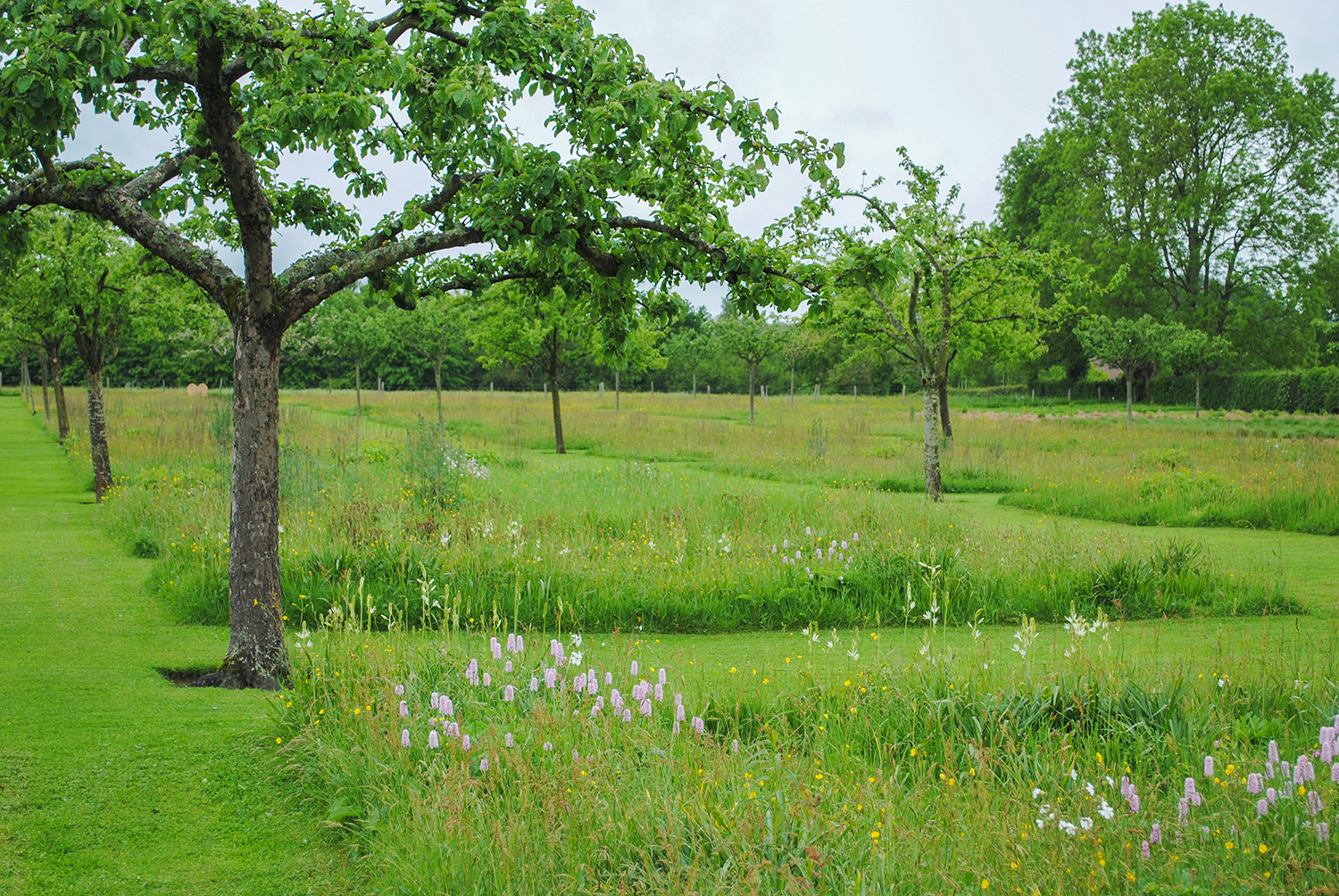Our spring plant fair was held this week, and it far exceeded our expectations. In just a couple of hours, we broke all our past records for amount of money raised at a plant sale! For me, what mattered most was seeing the hard work that our students put into making this event a success and then seeing such a positive response from the public. My team of student apprentices were absolutely elated. These events are an open house for the public to come see how students grow plants, and since all funds from the plants purchased come back to support educational endeavors, it is also an opportunity for visitors to see what new projects students have been developing. Follow along below for photos from the event and a few great plants that look good as we near the end of the semester.
The glasshouse quickly filled up with patrons. Eventually, there was a line out the door for a solid 45 minutes!
Plantery apprentice Ben (far right) gives a tour of the gravel bed and new willow fence students built.
Here’s a ground-level view of the spectacular willow fence that our students built this spring. It won’t last forever, but having this ephemeral and functional art really encourages creativity within the Plantery.
Bonfires for s’mores and karaoke enlivened the event.
Hannah (L) managed the karaoke booth while singers like Hailey (R) took the stage and sung their hearts out.
My colleagues Drs. Stephanie Jones and Michael Maurer enjoy the s’mores campfires.
Kathryn (L) and Hanna (R) are all smiles during a brief moment the greenhouse isn’t packed with people.
And, we can’t have a plant fair without amazing plants! Gaura lindheimeri ‘Sparkle White’ was just coming into flower with its charming gossamer blooms.
The blooms on Manfreda ‘Spot’ had been much anticipated for weeks as students watched the inflorescenses rise. We were glad they were still in flower for the plant fair.
One of my favorite contrasting flower combinations of late is this pairing of the giant golden flowers of Oenothera macrocarpa with the deep purple Glandularia canadensis ‘Homestead Purple’. They are both thriving within our gravel garden strip alongside the headhouse.
The flower on this Astrophytum myriostigma had just closed for the night.
We tried an aloe in the gravel bed in a very protected location, and we were delighted to see it return and start flowering this spring.
Verbena bonariensis bloomed above a carpet of Oenothera speciosa.
And, one of the highlights of the spring plant fair was seeing all the plants we grew for the fall plant fair at their peak. Here a carpet of Jacobaea cineraria (Senecio cineraria) ‘Silver Dust’ and a few plants of ‘New Look’ in the container brighten a bed near the headhouse.






































































